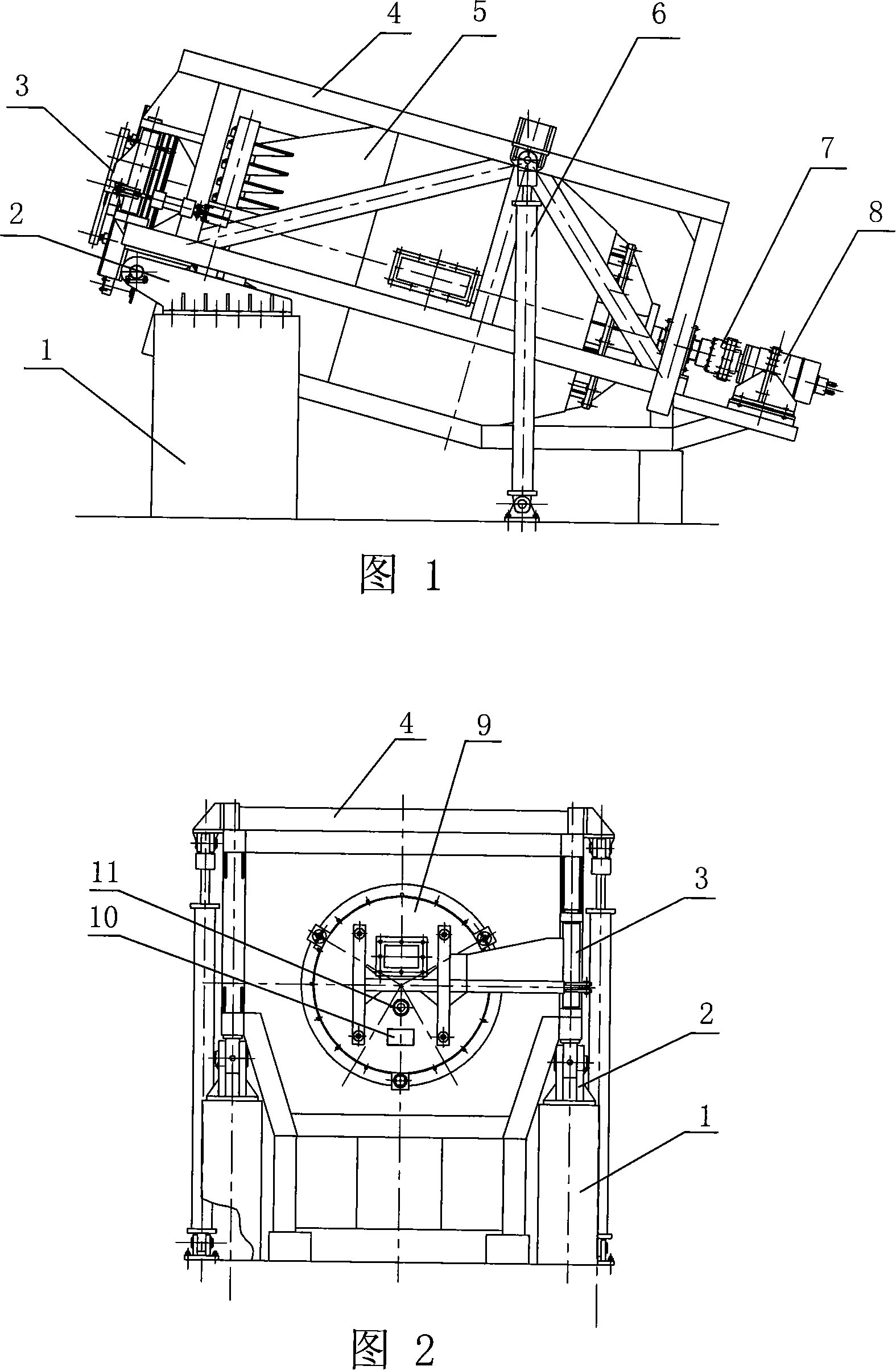Tiltable rotary secondary aluminum smelting furnace
A technology of rotary furnace and recycled aluminum, which is applied in the field of smelting recycled aluminum, which can solve the problems of reducing the grade of aluminum melt, increasing energy consumption, and causing great harm to human body, so as to reduce the probability of metal oxidation and burning loss, improve efficiency and production capacity, and reduce heat loss. Swap Mode Advanced Effects
- Summary
- Abstract
- Description
- Claims
- Application Information
AI Technical Summary
Problems solved by technology
Method used
Image
Examples
Embodiment Construction
[0027] The present invention will be further described in conjunction with the accompanying drawings of the above-mentioned embodiments.
[0028] As shown in the figure, the tiltable rotary secondary aluminum smelting furnace according to the present invention has a drum type rotary furnace body 5, the cross section of the inner cavity of the rotary furnace body 5 is a regular hexagon, and the rotary furnace body 5 is equipped with a refractory Castable furnace lining, stirring fins are provided on the inner wall of the rotary furnace body 5, the rotary furnace body 5 is erected on the steel frame 4, the front end of the rotary furnace body 5 is installed in the shaft sleeve, and the front end of the rotary furnace body 5 is provided with a round The furnace mouth and the rear end of the rotary furnace body 5 are connected to the power shaft, the power shaft is the power shaft of the hydraulic motor 8, connected by the coupling 7, and the hydraulic motor is also arranged on the...
PUM
 Login to View More
Login to View More Abstract
Description
Claims
Application Information
 Login to View More
Login to View More - R&D
- Intellectual Property
- Life Sciences
- Materials
- Tech Scout
- Unparalleled Data Quality
- Higher Quality Content
- 60% Fewer Hallucinations
Browse by: Latest US Patents, China's latest patents, Technical Efficacy Thesaurus, Application Domain, Technology Topic, Popular Technical Reports.
© 2025 PatSnap. All rights reserved.Legal|Privacy policy|Modern Slavery Act Transparency Statement|Sitemap|About US| Contact US: help@patsnap.com

